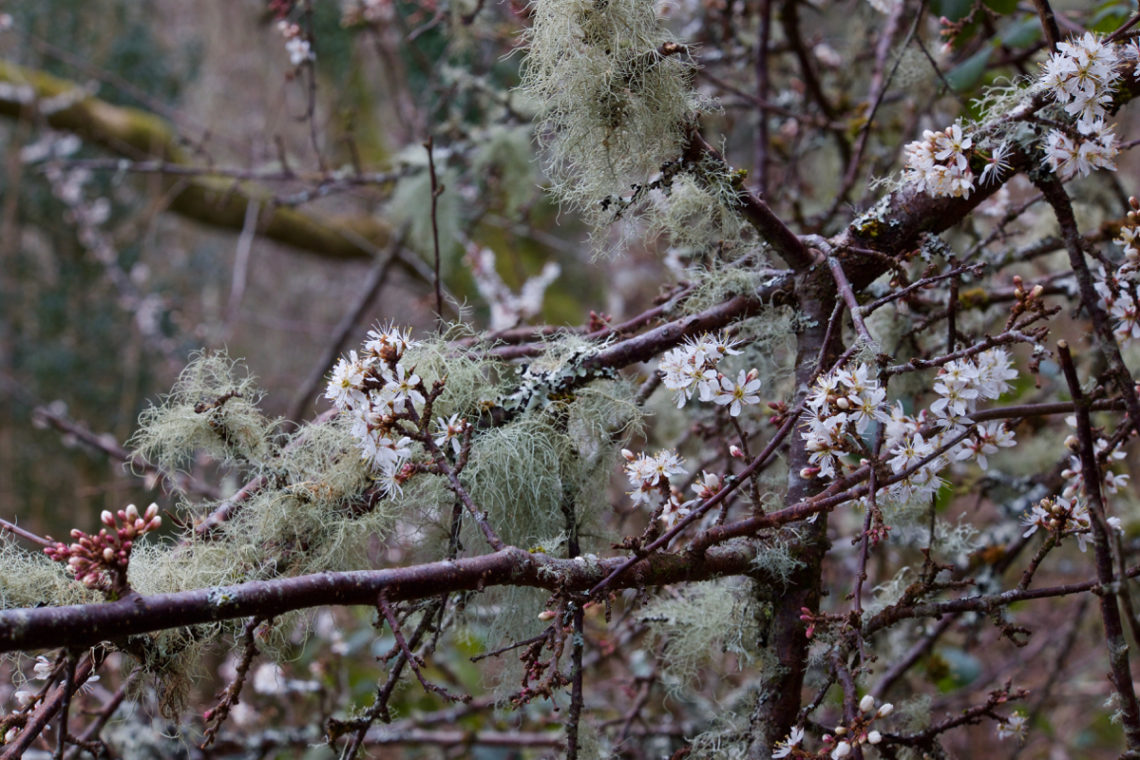
Before the rain
In the woods above Crinan, which have been soaked with rain pretty much constantly for the last five or six months, the first blackthorn blossom is coming out, lighting up the dark branches like stars among the fronds of silvery-green lichen.
The very tips of leaves are beginning to show on the birches, and celandines speckle the roadside verges. The hazel is still holding onto its catkins – mostly withered now, and brown, having shed their pollen – but the strap-like leaves of bluebells are pushing through underfoot, and the first chiffchaffs are calling; to hear them, you can’t doubt that spring is here, despite the sudden gusts of cold wind.
We were up there on a Sunday afternoon in early April, on an impulsive wander that had taken us in search of a cross-carved stone in a little graveyard by the name of Kilmahumaig. The stone was easy to find, leaning against the boundary wall as if resting after some great exertion. Liberally daubed with lichen, as most of them are, it didn’t look vastly different from a lot of the other grave markers round about… but on closer inspection we could make out the slightly raised outline of a cross.
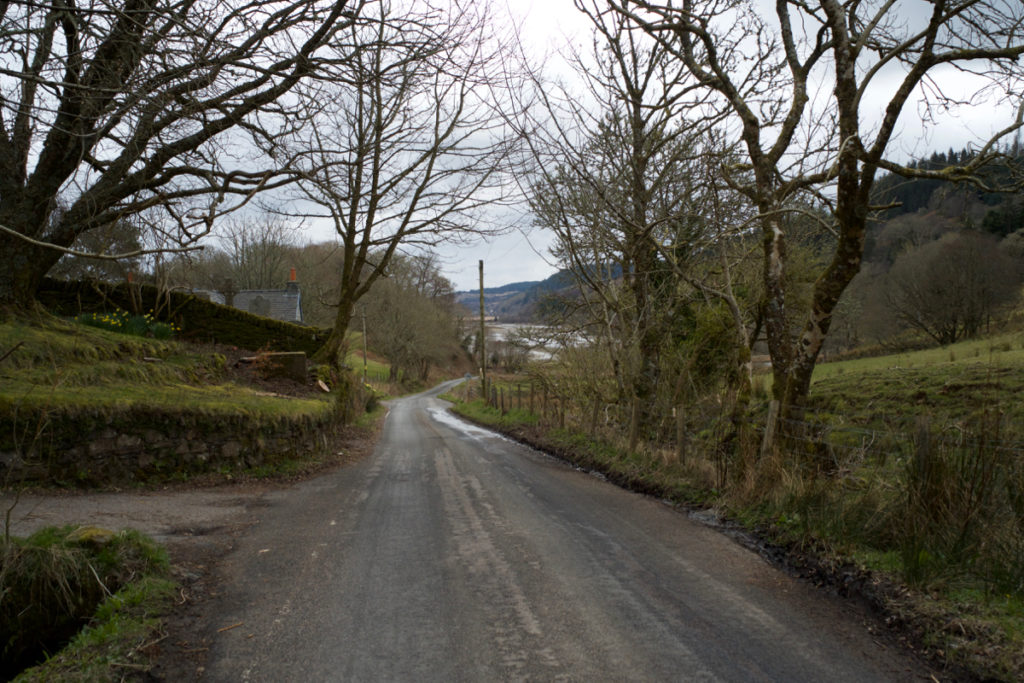
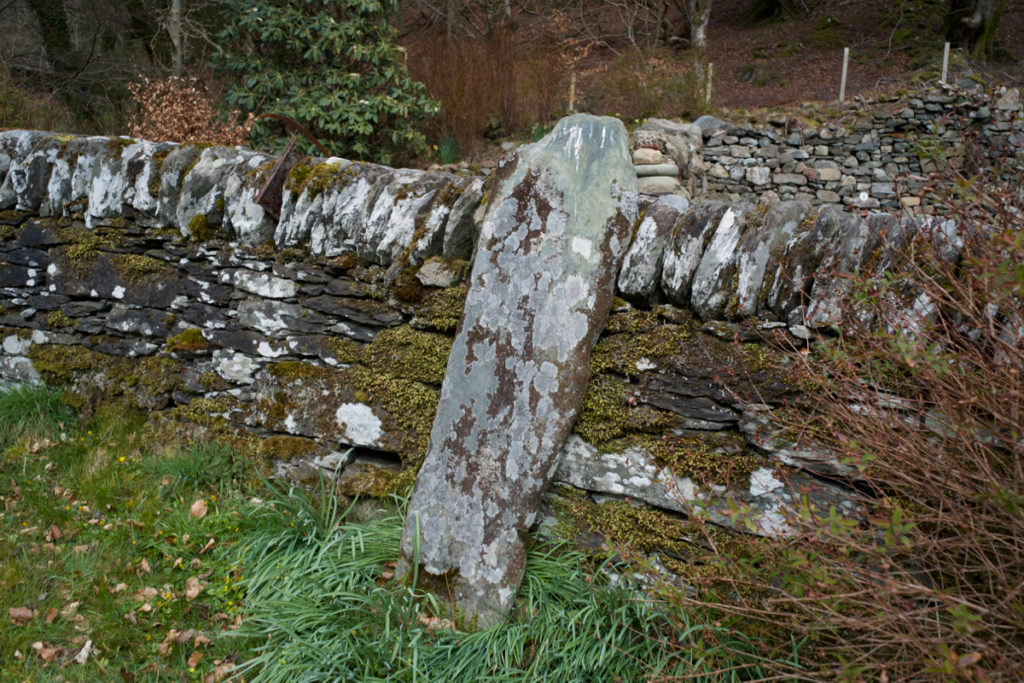
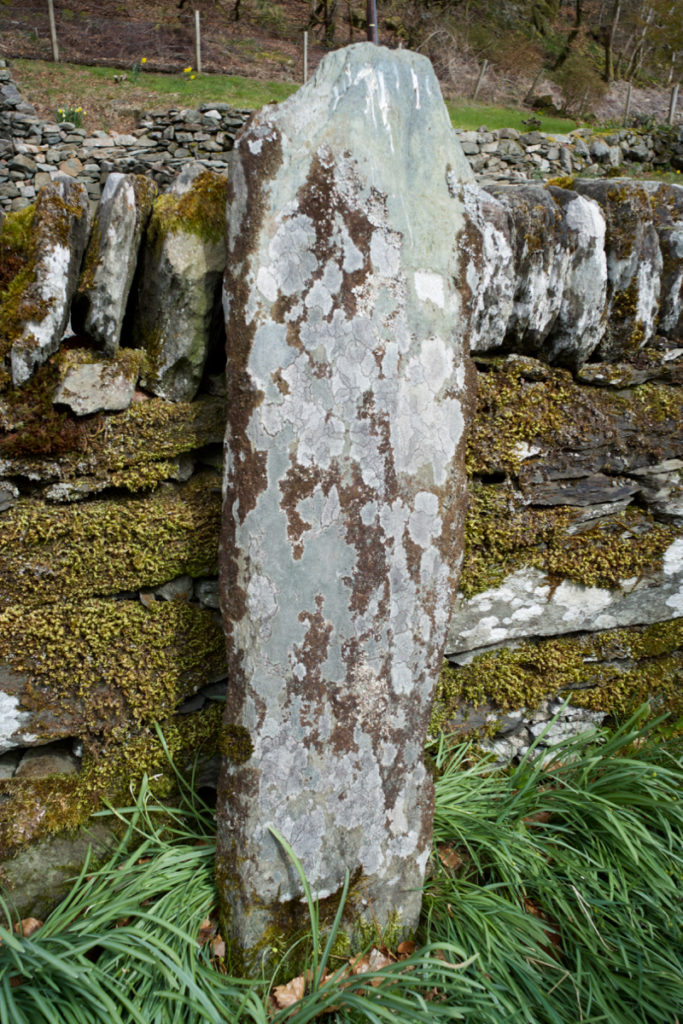
In her article, ‘The Kilmahumaig Stone’ (The Kist no.32, Autumn 1986) Marion Campbell considers what was then a new discovery by surveyors of the Royal Commission on Ancient and Historic Monuments of Scotland. She says: “The name implies an early Christian site, the cella of Cummene. Both the syllable mo- and the diminutive -aig are endearments. There was a Cummene the White, Abbot of Iona 657-669, author of a lost work on Columba’s miracles, who might have been commemorated at Crinan by a pupil or might himself be the founder.”
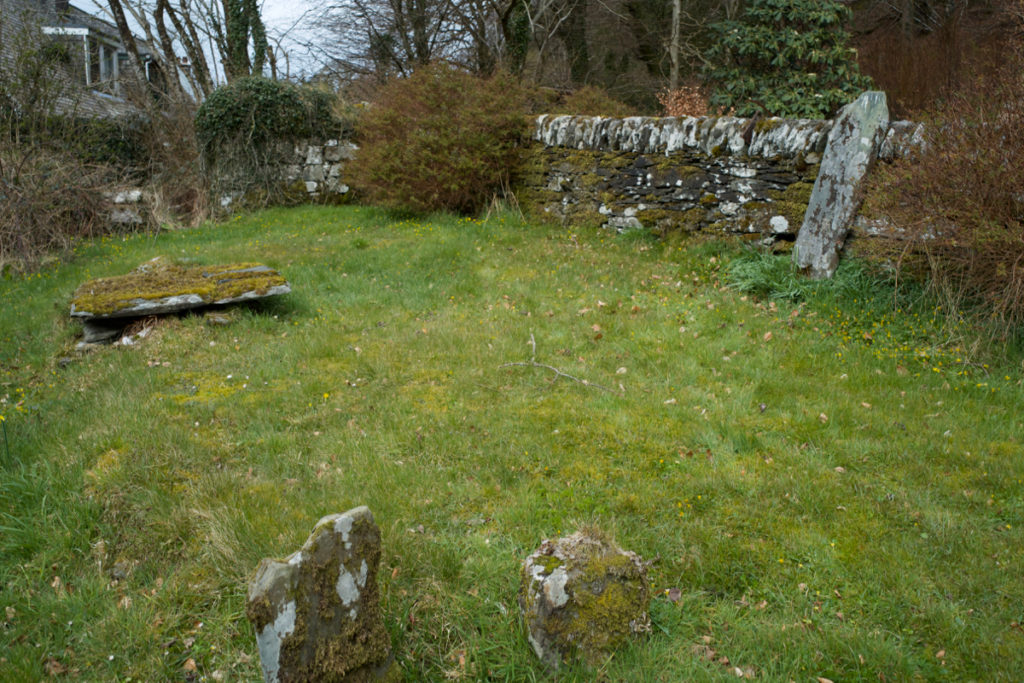
The graveyard of Kilmahumaig. There was once a chapel here, but the last remains of it had disappeared by about 1845
Miss Campbell believed the stone to be unusual in depicting two pairs of horsemen on either side of the cross shaft. I’m glad that she was able to make these out at the time, and luckily there’s a sketch published with the article (which I can’t reproduce here but there’s a link below). She could see “strong affinities with Pictish designs”, but added that “both Saxon and Pictish art forms were of interest to Dalriadic designers.”
Then she makes a very interesting reference to a nearby feature called Dun Domhnuill. This is a low hill about 30 feet (10 metres) high, apparently man-made. Miss Campbell calls it a “moot hill, the Judgement Seat of the Lords of the Isles,” and wonders whether the cross-carved stone perhaps commemorated a meeting of chiefs or a treaty between tribes, agreed at the mound and sealed on holy ground.
We could see the mound of Dun Domhnuill easily from the roadside, just a couple of hundred yards further on from the old graveyard. It’s easy to overlook, and we’ve driven past it many times without even noticing. Here and there, a few stones are projecting out of the sides of it, but it’s impossible to make out where they might once have been placed. Miss Campbell suggested that the mound may have been terraced with narrow ledges, and she thought it was strongly suggestive of a cairn – in other words, a prehistoric feature, possibly Bronze Age or earlier, which was re-used by the Lords of the Isles, who flourished from about the 13th to the late 15th century.
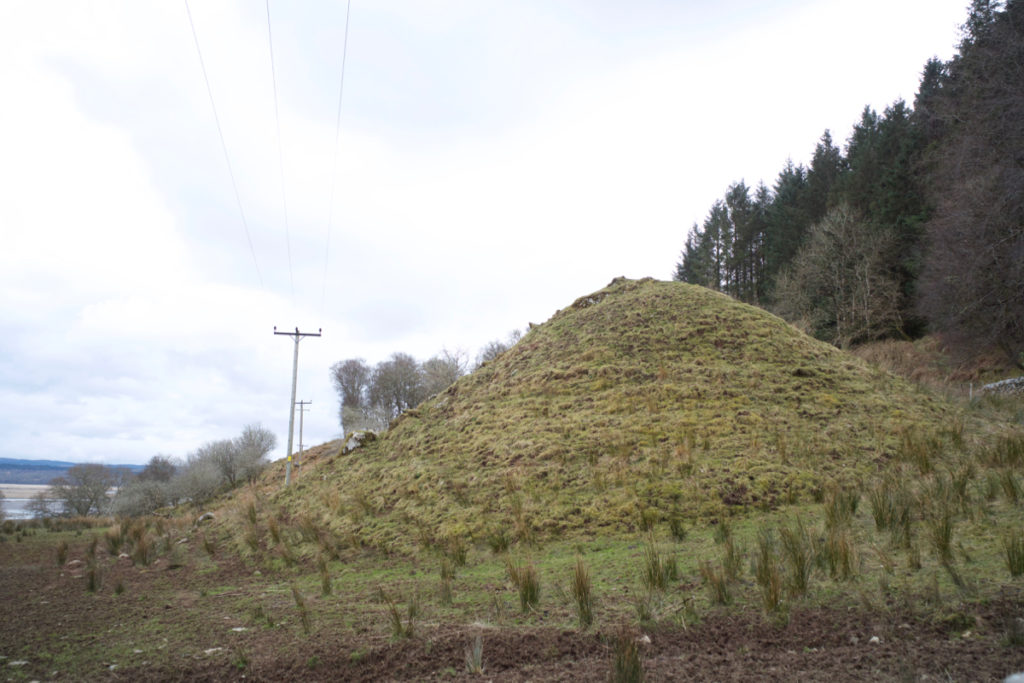
Dun Domhnuill. The stone seat or Judge’s Chair is long gone: according to Canmore’s survey of 1964 (also by Miss Campbell), it was smashed by vandals “within living memory.”
In ‘The Last MacDonalds of Isla’ (1895), Charles Fraser-Mackintosh repeats a declaration, traditionally made by a MacDonald Lord of the Isles around 1400, which grants lands at Kilmahumaig to a MacKay, perhaps in gratitude for loyal service.
Tha mise, Dòmhnull nan Dòmhull,
A’m shuidhe air Dundomhnuill,
A’ tabhairt do Mhac Aoidh
Còir air Cillmathumaig,
O ’n diugh gus am màireach,
‘Us o sin gu sìorruidh.
(I, Donald of Donald, sitting on Dundonald, do give to Mackay a right to Kilmahumaig from to-day till to-morrow, and from that for ever.)
The historian Michael Murray, writing in The Kist in 1996, explains that a Niall MacKay still held the ‘chapleinry of St Colmocus’ two hundred years later, and in fact the family retained Kilmahumaig until 1712, when it was acquired by Angus MacInleich or Leitch. Murray says that the chapel’s dedication “would be to one of the many saints bearing the Irish name of Colman or its variant Colmac; other sources suggest a derivation from Cumma or Cummoc.”
Close by, a footpath winds up into a woodland clearing and presently forks into two: a signpost points north-west to Crinan Basin, and roughly north-east to Dun Mor, the remains of an Iron Age fort. We chose the path to Dun Mor, and climbed up to its summit where we gazed out at the Add estuary and the Moine Mhor or ‘great moss’ spread out below us.
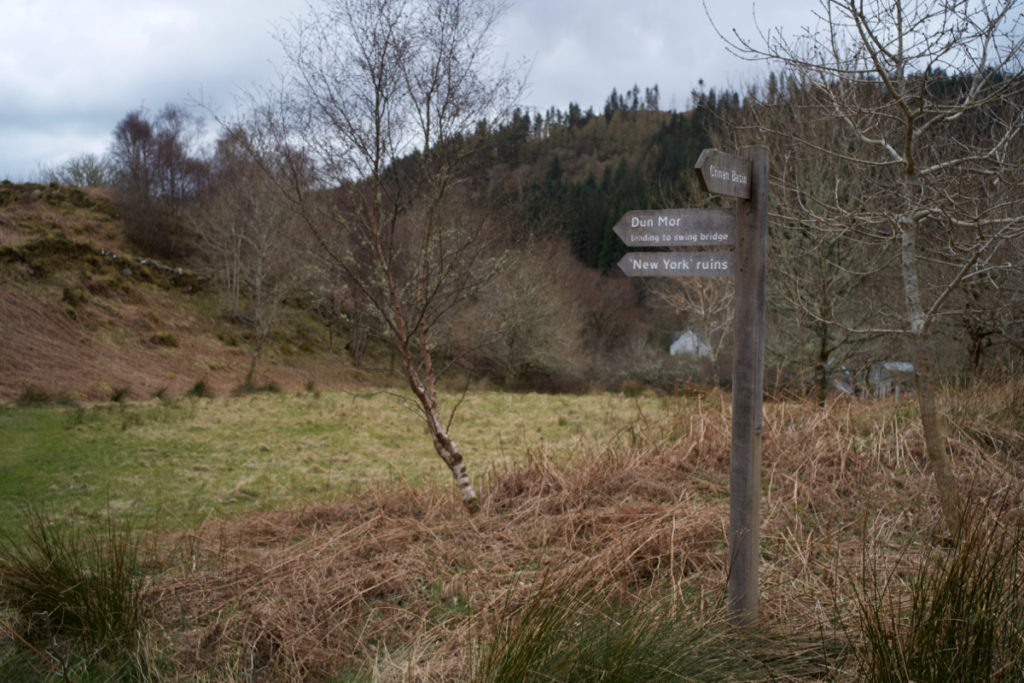
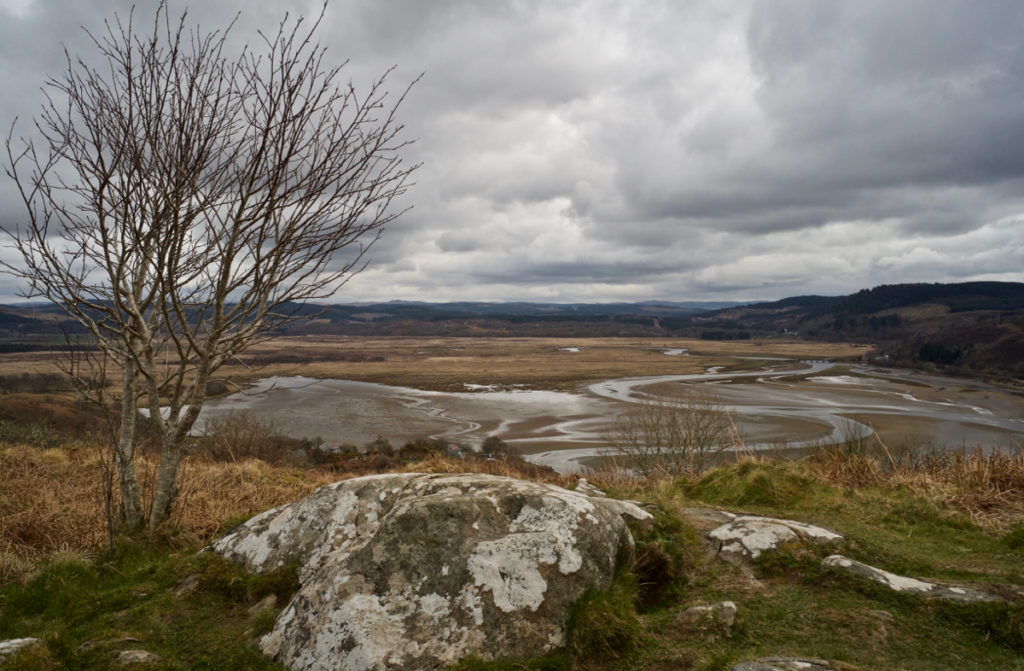
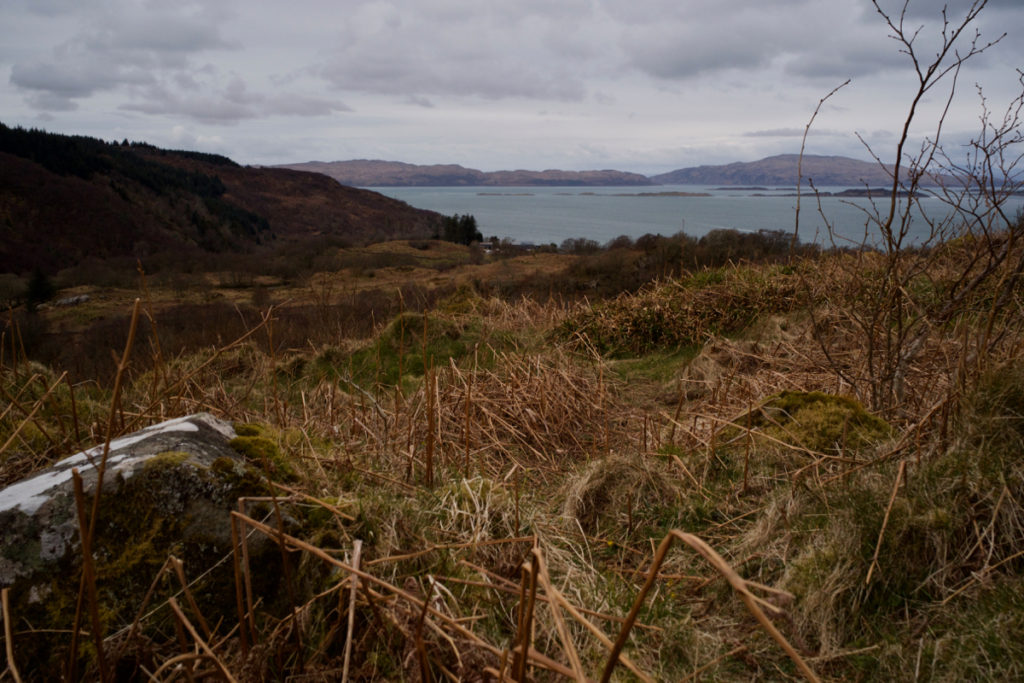
Unlike Castle Dounie, a mile or two to the south-west, there’s not much visible evidence of the hill fort – just some evocatively placed stones which may or may not be significant – but the atmosphere here feels secure and gently enclosing, despite its obvious exposure.
Wending our way back down, we re-joined the main path and followed it as far as ‘New York’, which sounds a lot further than it actually was. New York was the name given to a row of about 8 stone cottages, quite high up on the flank of the hill overlooking Crinan and its harbour. They exist now only as the lowest courses of stone, but it’s possible to trace the original outline of each dwelling; in the southernmost cottage, a magnificent hazel tree was flourishing.
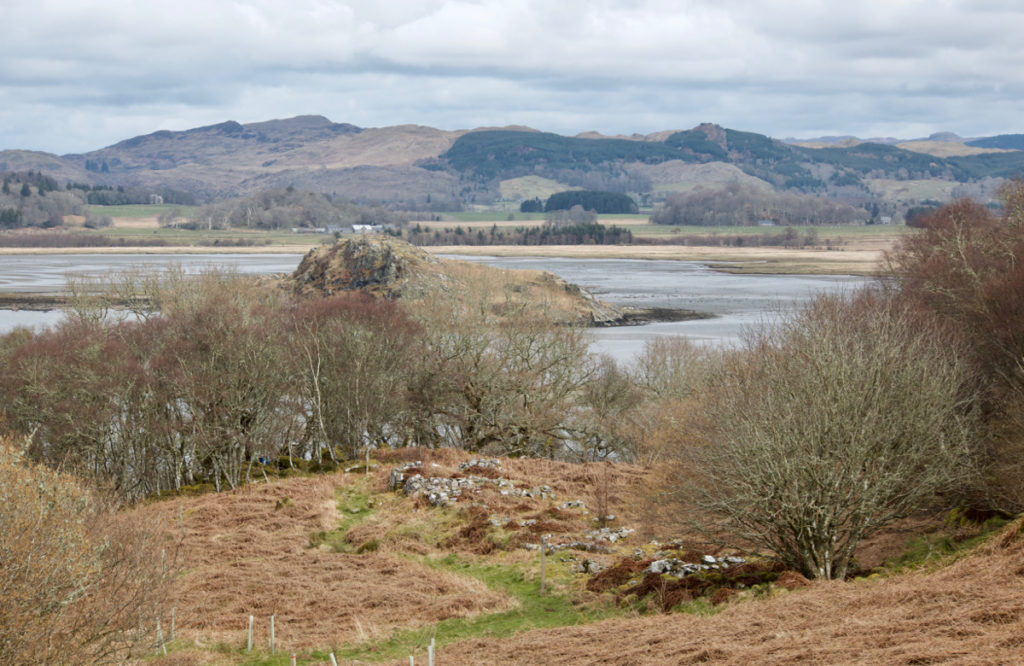
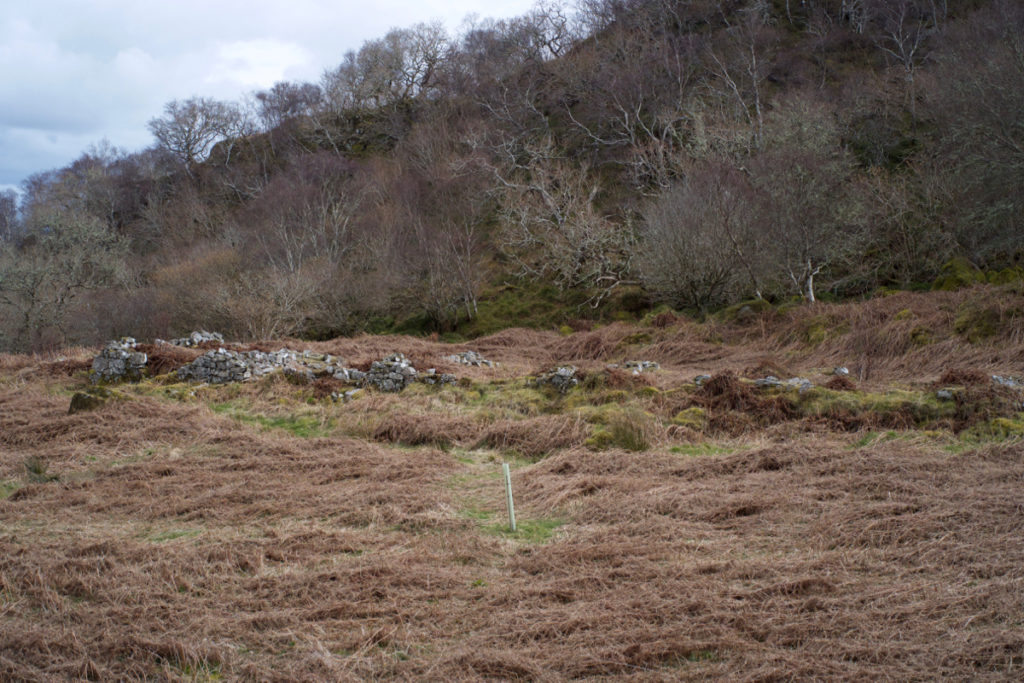
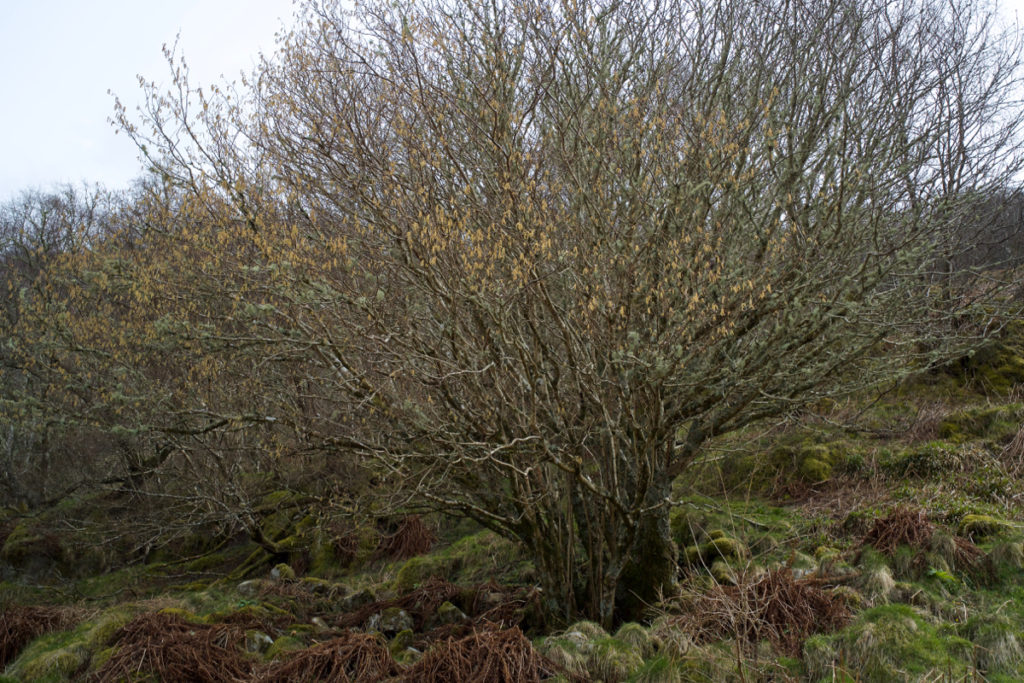
Michael Murray investigates the history of these cottages in his article ‘Kilmahumaig and the Mystery of New York’ (The Kist, 1996). In his opinion, they were built as quarrymen’s cottages, but they may also have housed men working on the Crinan Canal, which was completed in 1801. Their name is thought to derive from the company that built them – the York Buildings Company – which at one time owned a number of estates throughout Scotland, and was engaged in mining and quarrying. Curiously, there are a few other ‘New York’ settlements in the west of Scotland thought to have sprung up as mining villages, quickly built and sometimes just as quickly abandoned: one was near Strontian in Ardnamurchan.
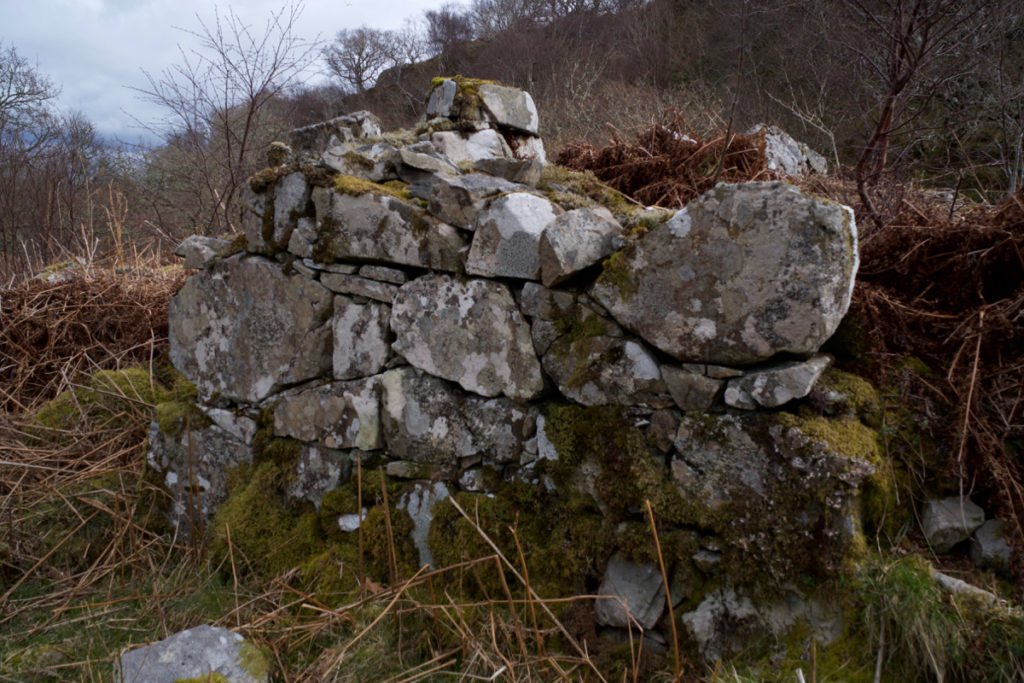
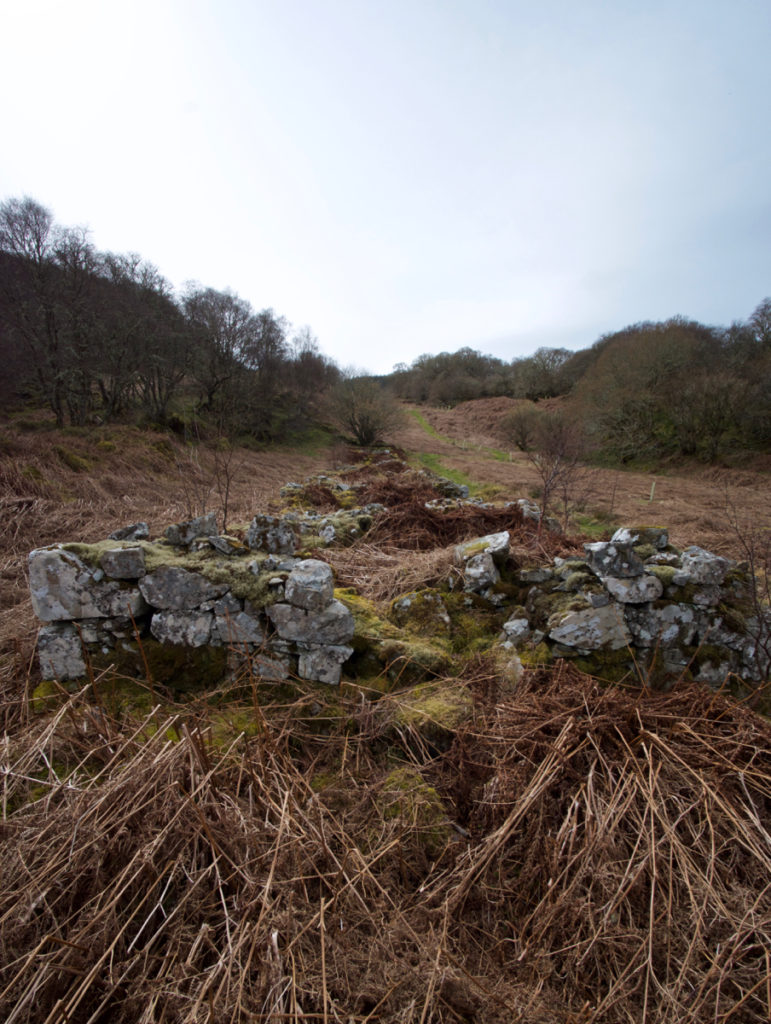
If the inhabitants were quarriers, they may have worked in a slate quarry which (according to The Kist’s editor) was on the south bank of the Crinan Canal, and operating in the late 18th century. Local slate was in great demand for roofing, and in fact the nearby ‘Slate Islands’ of Seil, Easdale, Luing, Lunga, Shuna and Belnahua were once said to have ‘roofed the world’. This might explain an alternative name for the New York cottages: ‘the Tile Houses’.
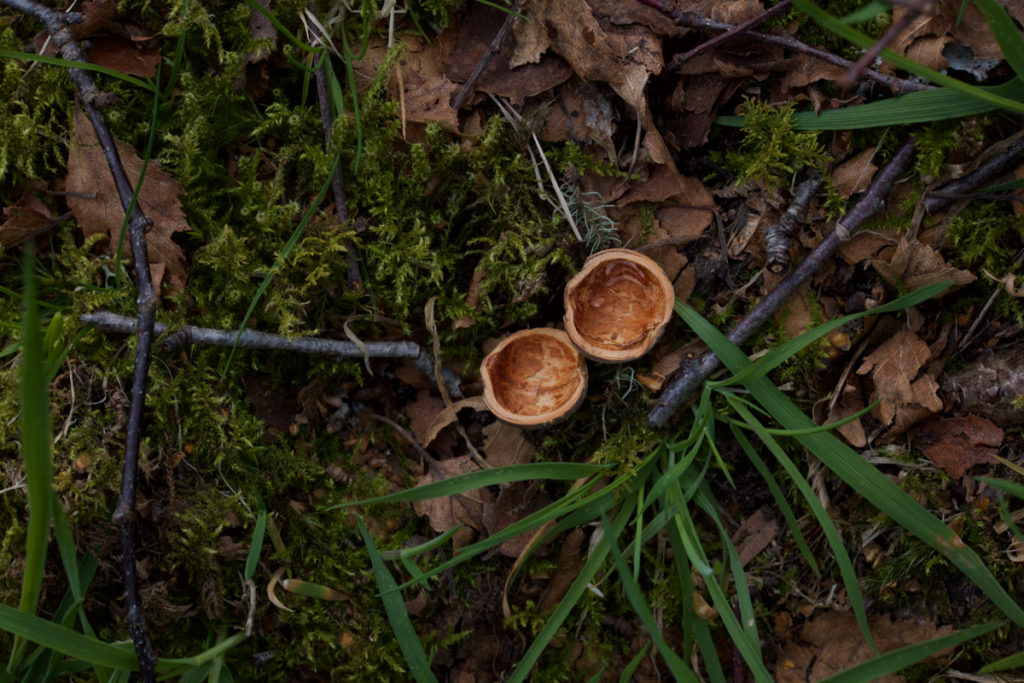
Michael Murray tries to trace the occupants of the cottages, but the evidence is frustratingly unclear. A few occupants may have lingered on into the mid or late 1800s. And we’re only seeing part of the picture, because the men would no doubt have had their wives with them, and their children; the place would have been bustling and noisy with people and animals.
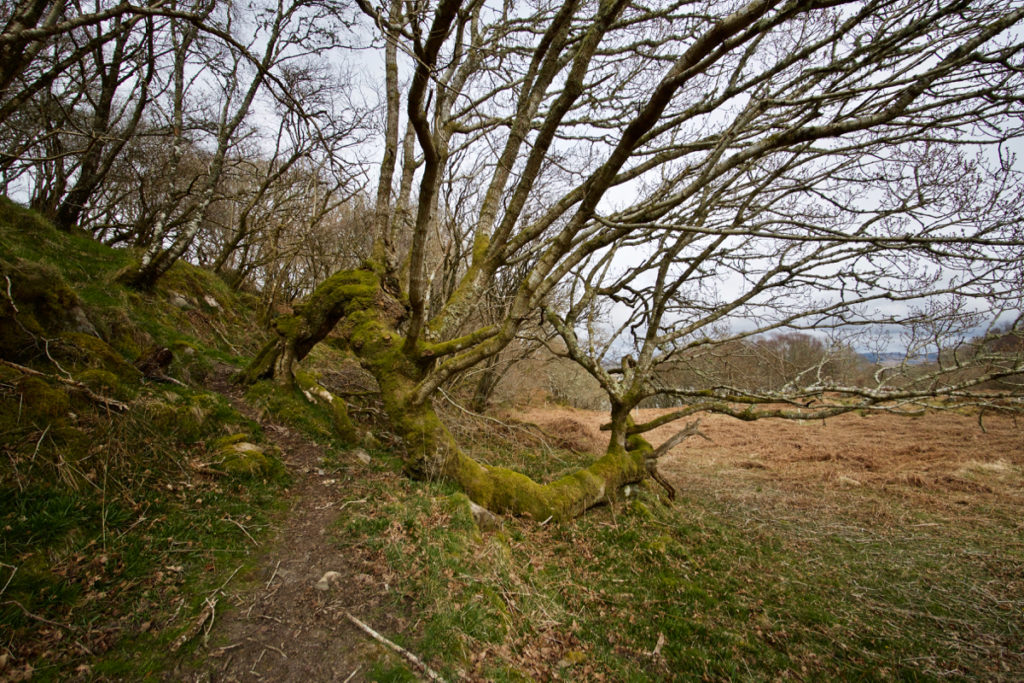
A ‘phoenix oak’, which has fallen a long time ago and re-grown, putting up vertical branches from the horizontal trunk. It’s possible to creep right through the loop created; if I was a tree-witch, I’d be drawn to this!
We made our way back, stopping to listen to robins vigorously proclaiming their territory, and examining the rocky banks which are peppered with natural hollows and caves. I do love this area – it has a soft magic that you can feel but can’t quite describe, and it feels bigger than it appears on the map.
At home, I remembered reading something about Crinan in an old book, ‘Loch Etive and the Sons of Uisnach’ (1885), by the historian R Angus Smith. I got it out to take a look. In the opening chapter, he recounts a discussion between a group of interested friends who are visiting the area, whom he names as Loudoun, Cameron, O’Keefe, and Sheena. They discuss the derivation of the place-name ‘Crinan’, and the origin of the people who first inhabited the area:
Sheena: I should like to know the names of the people and the places, and what kind of people lived in vitrified forts.
Loudoun: You ask difficult questions, but I suppose Picts lived here—‘Cruithne.’ …
[Discussion about the folk of Dalriada and the Picts]
Loudoun: Is there not a conical hill near the modern house, called, perhaps by an old Christian name – Kilmahonig¹, at Crinan, and having an appearance of stones placed round like a moat hill or a Thing?
Cameron: I know what you mean – it seems to me rather like the works of nature as they are in the district, but I did not examine, and at any rate Thingvöllr is Norse, and if the cone be of that class it would be much after the time of our Hibernian friends.
O’Keefe: … if Duntroon² is an old name it might be made to mean the fort of the Druids, and Crinan or Grianan³ or Greenan, the sun-place, the place where the sun was worshipped. The name may have included all the valley, and these great stones towards Kilmartin may have been the temple.
Loudoun: I suppose you know that you are talking heresy. I wish I could make out something so clear…
1. This sounds to me like the Judgement Seat at Kilmahumaig
2. Duntrune, a castle on Loch Crinan
3. Grianan is from Old Irish grían (sun); grianan means ‘sunny place’
I love reading the learned arguments of historians a century or more ago – they have an alternative slant on things, limited of course by archaeological understanding at the time, but I still feel that you can get flashes of insight that have since been forgotten. Elsewhere, I’ve read that the village of Crinan was once called Port Righ or ‘king’s port’, perhaps because it was into this sheltered harbour that the kings of Dalriada arrived by sea and progressed to their seat at Dunadd.
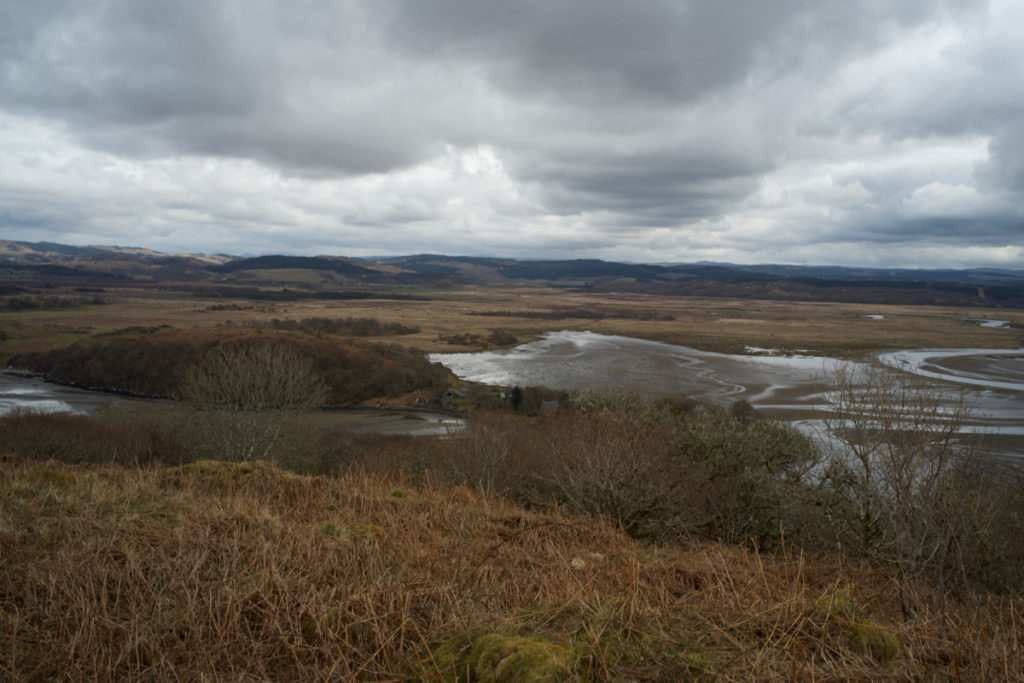
From Dun Mor, looking towards Dunadd
Meanwhile the rain has returned, and the sea is a misty dove grey. At least all the tadpoles in the rapidly shrinking pools can wriggle free again, and the water will refresh the primroses and the mosses.
Reference:
• Marion Campbell, The Kilmahumaig Stone, The Kist (The Magazine of the Natural History and Antiquarian Society of Mid Argyll) no.32, 1986
• Charles Fraser-Mackintosh, The Last MacDonalds of Isla (1895)
• Michael Murray, Kilmahumaig and the Mystery of New York, The Kist no.51 (1996)
• A K Elliott, The York Buildings Company, The Kist no.51 (1996)
• Canmore: Kilmahumaig stone
• Canmore: Dun Domhnaill
• Canmore: Dun Mor
• Canmore: ‘Remains of houses‘
• The Slate Islands
• R Angus Smith, Loch Etive and the Sons of Uisnach (1885)
Images copyright Colin & Jo Woolf

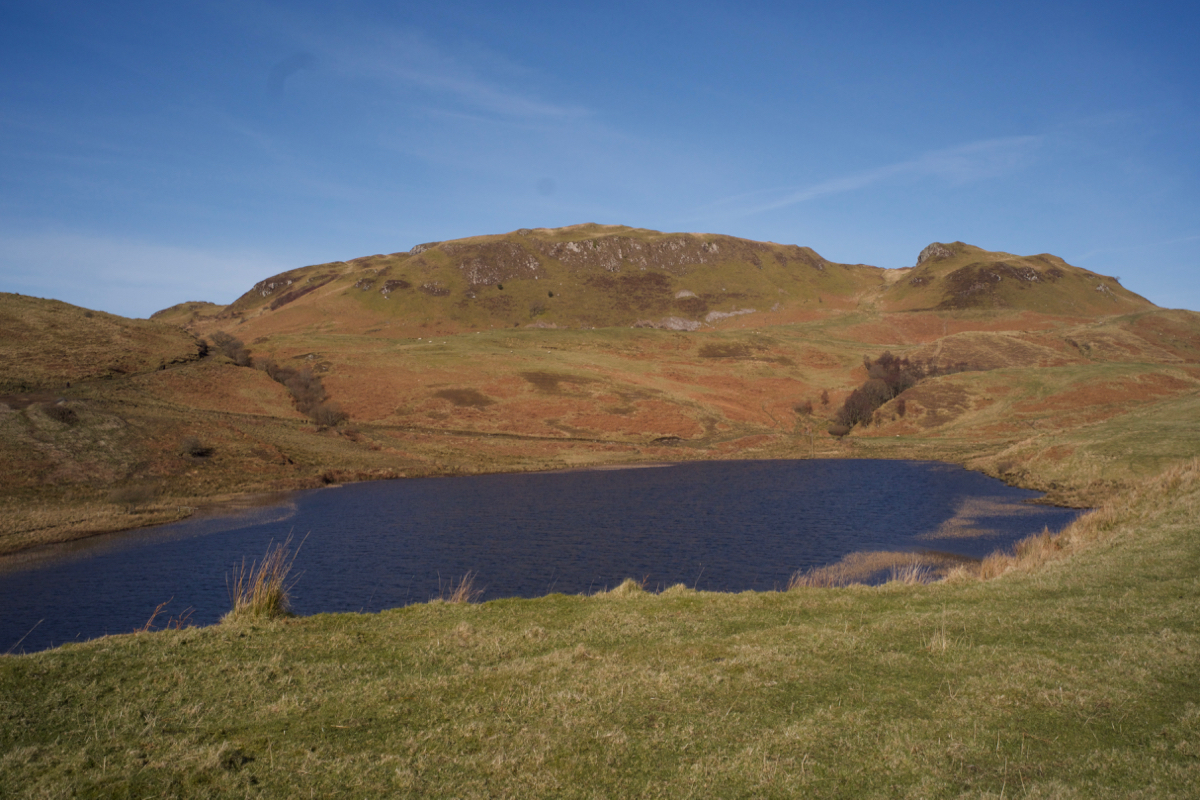

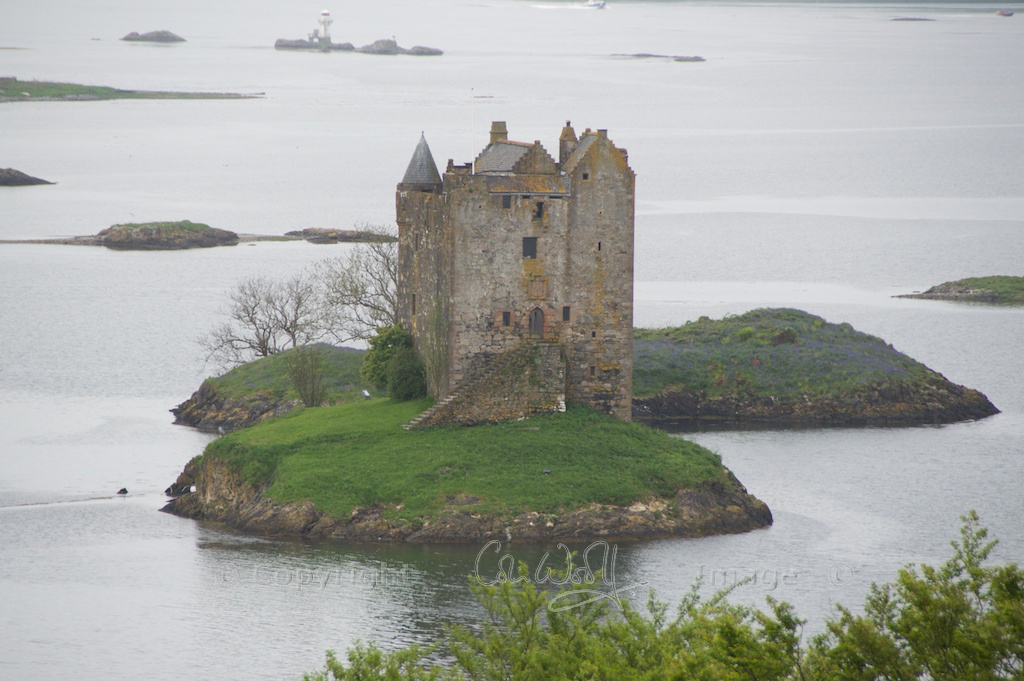
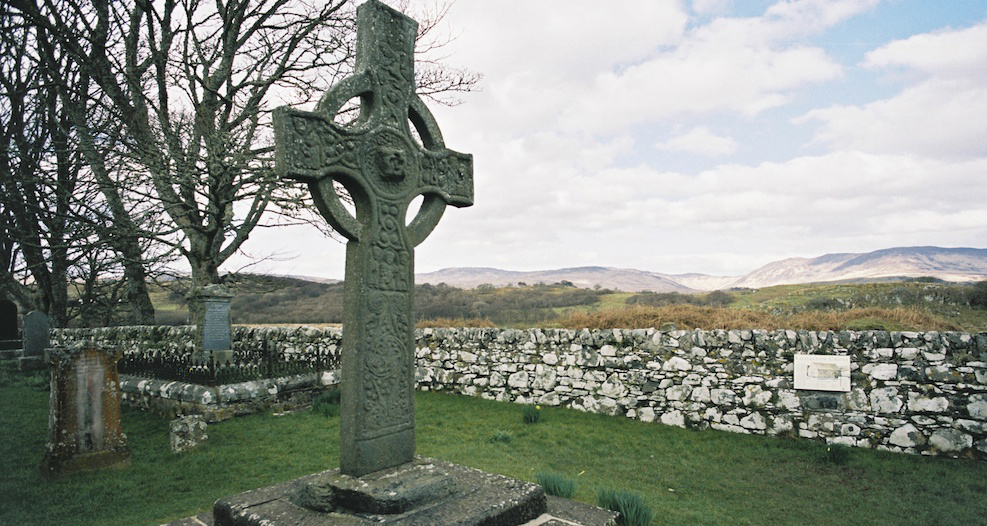
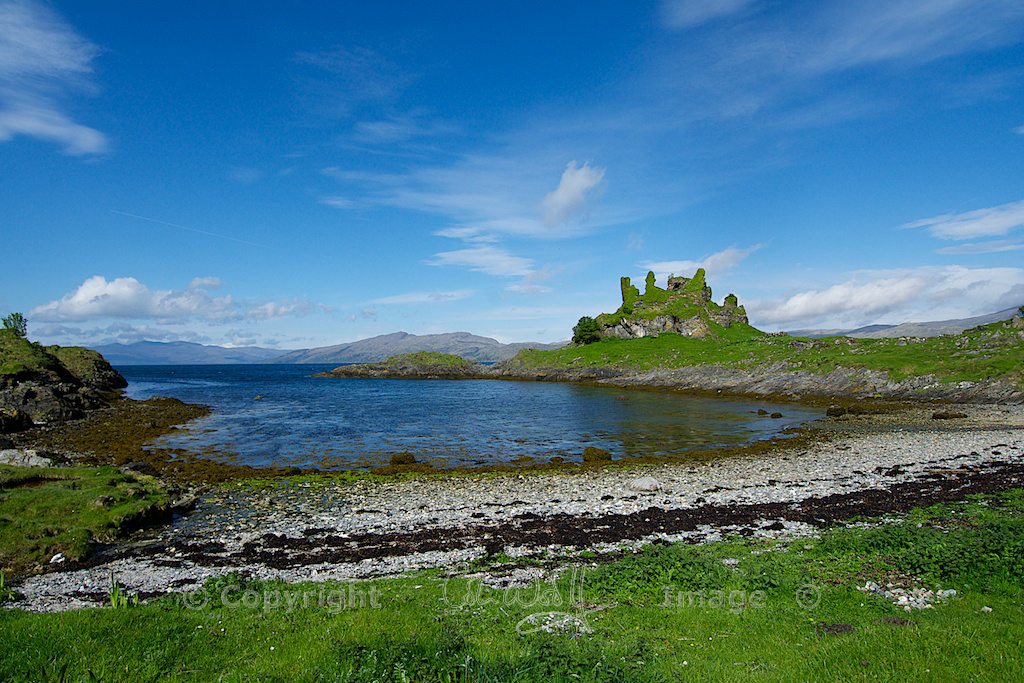
2 Comments
Finola
I love your description of the place as having “a soft magic that you can feel but can’t quite describe” – we feel that all the time over here. I read ore heard somewhere recently that York ultimately derives from the word for yew tree.
Jo Woolf
Thank you, Finola – yes, I get that impression very much from your own blog posts! That’s very interesting about ‘York’ – might be a Gaelic root in there?